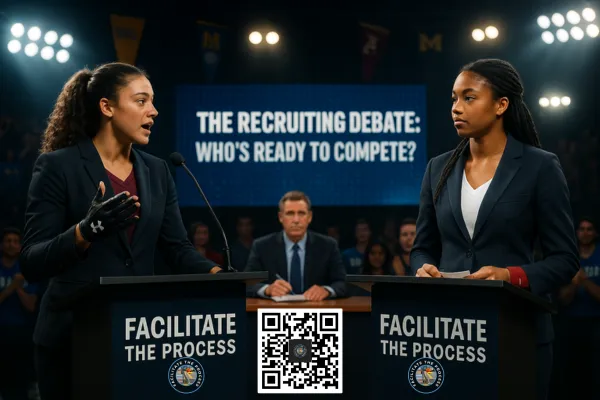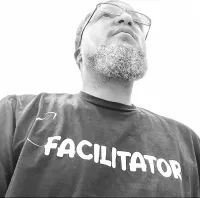

Your Success, Our Priority
Browse our articles below
Make sure to request our FREE Role Player Guide to Recruiting
Click the more stories button for additional articles

The Politics of Getting Recruited
The Politics of Getting Recruited
Introduction
Every year, thousands of student-athletes enter the recruiting process, but only a select few emerge victorious. The competition is as intense as any election, with each candidate striving to capture the attention and the vote of college coaches. Many athletes struggle to understand why student-athletes need a recruiting strategy or how to stand out in recruiting when the field is crowded with talent. Drawing on years of expertise in student-athlete recruiting strategy, this article offers a unique perspective: treating the recruiting process as an election. Readers will discover actionable insights on building an athlete highlight reel that commands attention, mastering personal branding for athletes, and navigating the campaign trail to success. By the end, readers will not only understand the parallels between elections and recruiting but will also be equipped with proven strategies to secure their spot on the team. This is more than advice, it is a roadmap to winning the recruiting race.
Take This Seriously!
Every student-athlete aiming for college sports faces a process that tests strategy, preparation, and self-promotion. The college athletic recruiting process resembles an election, where every move counts, exposure matters, and the final decision shapes futures. Athletes campaign for opportunities, coaches evaluate their options, and families rally support. This journey rewards those who take control, communicate clearly, and execute a plan. Candidates do not win elections by luck. They win by building a strong profile, targeting the right audience, and delivering consistent results. The same applies to recruiting. Here is how to turn the recruiting process into a winning campaign for student-athlete exposure and long-term success.
Why Student-Athletes Need a Recruiting Strategy
Winning in recruiting requires more than talent. It demands a strategy. Coaches receive hundreds of profiles and messages each season. Without a plan, student-athletes get lost in the shuffle. A recruiting strategy clarifies goals, identifies target programs, and maps out actionable steps. It signals to coaches that the athlete understands the process and values their own development.
Every student-athlete’s path looks different. Some need exposure to high-academic programs. Others want the best athletic fit or a specific location. A strategy filters the noise, allowing athletes to focus energy where it matters. Families and coaches benefit from a clear plan, too. With everyone aligned, decisions get easier and progress becomes measurable. The recruiting process rewards those who act with purpose, track their outreach, and follow up consistently.
Building a Strong Athletic Profile for Recruiting
Visibility begins with a profile that grabs attention and communicates value. Coaches want to see who the athlete is, what they bring, and how they fit into a program. A strong athletic profile for recruiting highlights measurable stats, academic achievements, and character. Video footage should be current and showcase real game situations, not just highlight reels.
Key elements for a strong profile include:
Academic transcripts and test scores
Verified athletic stats and awards
Coach contact information and references
Short, focused highlight videos
Personal statement outlining goals and values
Consistency across all platforms matters. Social media, recruiting sites, and personal websites should match. Gaps or outdated information cause coaches to move on. Building and maintaining this profile signals seriousness and respect for the process.
Student-Athlete Exposure: Getting Noticed by the Right Coaches
Exposure is more than attending one showcase or sending a mass email. Real student-athlete exposure targets the right programs and delivers the right message. Athletes and families need to research which schools are realistic matches, based on academics, athletics, and personal preferences.
Effective exposure methods include:
Direct, personalized emails to coaches
Attending camps and showcases where target programs recruit
Using trusted recruiting platforms for verified outreach
Posting regular updates and highlights on social media
Tracking which programs respond and how they engage helps refine the approach. Exposure is about quality, not just quantity. The goal is to build relationships with coaches who value the athlete’s skills and fit.
How the Recruiting Process Mirrors an Election
Both processes reward preparation, communication, and persistence. Candidates and recruits must stand out in a crowded field. Each interaction with a coach is like earning a vote. Consistency, transparency, and follow-up build trust, just as in a campaign. Coaches make decisions based on credibility, fit, and need. Athletes who control their messaging and deliver on promises rise to the top.
Key parallels:
Building a campaign (profile and strategy)
Targeting the right audience (coaches and programs)
Clear, consistent messaging (emails, calls, social media)
Tracking outreach and engagement (votes and supporters)
Executing on deadlines and requirements (commitments and offers)
Understanding these similarities helps student-athletes take control, rather than waiting for a coach to notice them.
Facilitate the Process: Tools and Resources to Streamline Recruiting
Technology now allows athletes to take charge like never before. Platforms that facilitate the process make outreach, tracking, and profile management easier. These tools help automate communication, monitor responses, and keep records organized. When used effectively, they reduce stress and prevent missed opportunities.
Recommended resources:
FTP Information Portal for step-by-step recruiting frameworks
Role Player Guide to Recruiting for tailored advice
Verified recruiting platforms for profile visibility and outreach
Templates for emails and follow-up communication
Staying organized and using the right tools removes guesswork and allows focus on execution.
How to Get Recruited for College Sports: Action Steps
Getting recruited is not passive. It is a series of deliberate actions. The following checklist gives student-athletes a foundation for success:
Assess academic and athletic strengths to target appropriate programs
Build and update a strong athletic profile for recruiting
Research coaches and programs to personalize outreach
Send direct messages with clear subject lines and concise information
Track responses and follow up professionally
Attend key events and engage with coaches in person when possible
Maintain eligibility by following recruiting rules and timelines
Each action builds momentum. Consistency is key. Persistence wins more opportunities than a single standout performance.
Common Mistakes That Derail the College Athletic Recruiting Process
Many athletes with potential miss out because of avoidable errors. Oversights can cost valuable opportunities. The most frequent mistakes include:
Sending generic emails to coaches, which feel impersonal
Failing to update profiles with recent stats or achievements
Ignoring academic requirements for eligibility
Missing deadlines for applications or financial aid
Relying only on social media for exposure
Awareness of these pitfalls allows for correction before they become obstacles. For more on how to improve your position, review this guide.
How Parents and Coaches Can Facilitate the Process
Support from adults can transform the recruiting journey. Parents and coaches serve as accountability partners, sounding boards, and advocates. Their involvement should focus on encouragement, organization, and removing barriers, not taking over the process.
Ways to help:
Assist with research and organizing information
Proofread profiles and emails for clarity and accuracy
Support attendance at showcases and visits
Encourage honest self-assessment and feedback
Empowering student-athletes to own their journey is the ultimate goal. Resources for parents and coaches can be found on the Facilitate The Process blog.
Adapting When the Recruiting Process Changes
Rules, timelines, and opportunities shift each year. The ability to adapt separates successful recruits from the rest. Student-athletes must stay informed about recruiting rules and eligibility changes. Flexibility in program selection and communication style opens more doors. When plans shift, a prepared athlete pivots without losing momentum.
Key adaptation strategies:
Regularly review NCAA, NAIA, and NJCAA updates
Stay in contact with coaches about changes in roster needs
Be open to different divisions, locations, or academic tracks
Adaptation is a skill. It grows with practice and preparation. For guidance on changing plans, explore this resource.
Owning the Outcome: Winning Your Recruiting Election
Recruiting rewards those who treat it like a true campaign. The power is in the hands of the student-athlete to influence outcomes through preparation, communication, and action. Each step, building a profile, targeting coaches, following up mirrors the energy and discipline of a candidate running for office. Results reflect choices and effort, not luck or chance. The college athletic recruiting process belongs to those who show up, stay organized, and keep moving forward.
Resources & Community
🎯
Follow Facilitate The Process on Facebook
https://www.facebook.com/facilitatetheprocess/
🌐
Join Our Recruiting Community
🔗
Get Started Today

